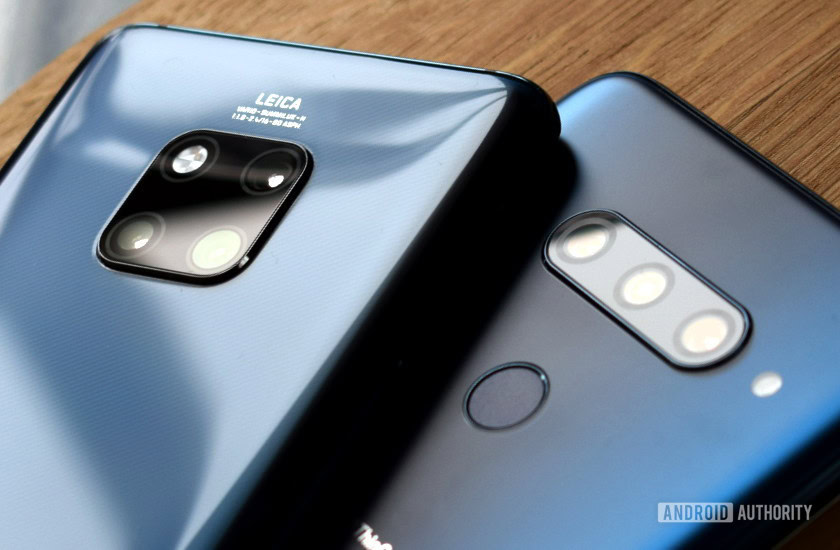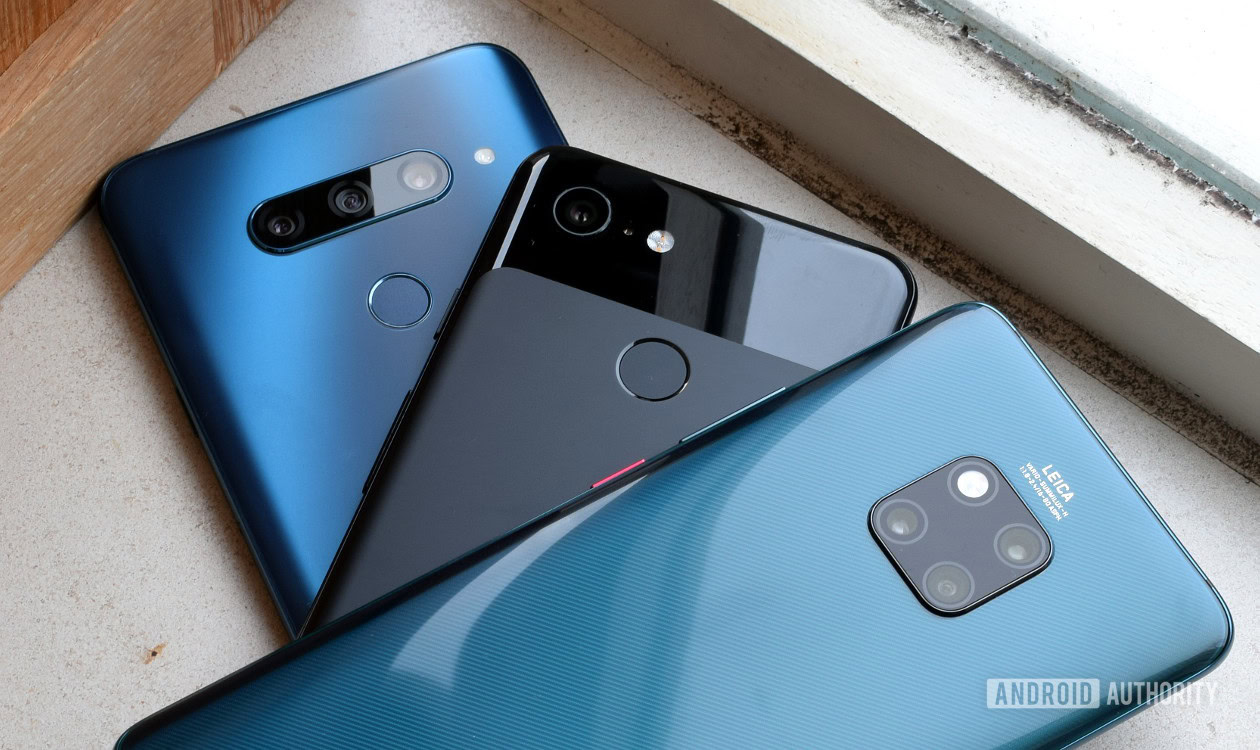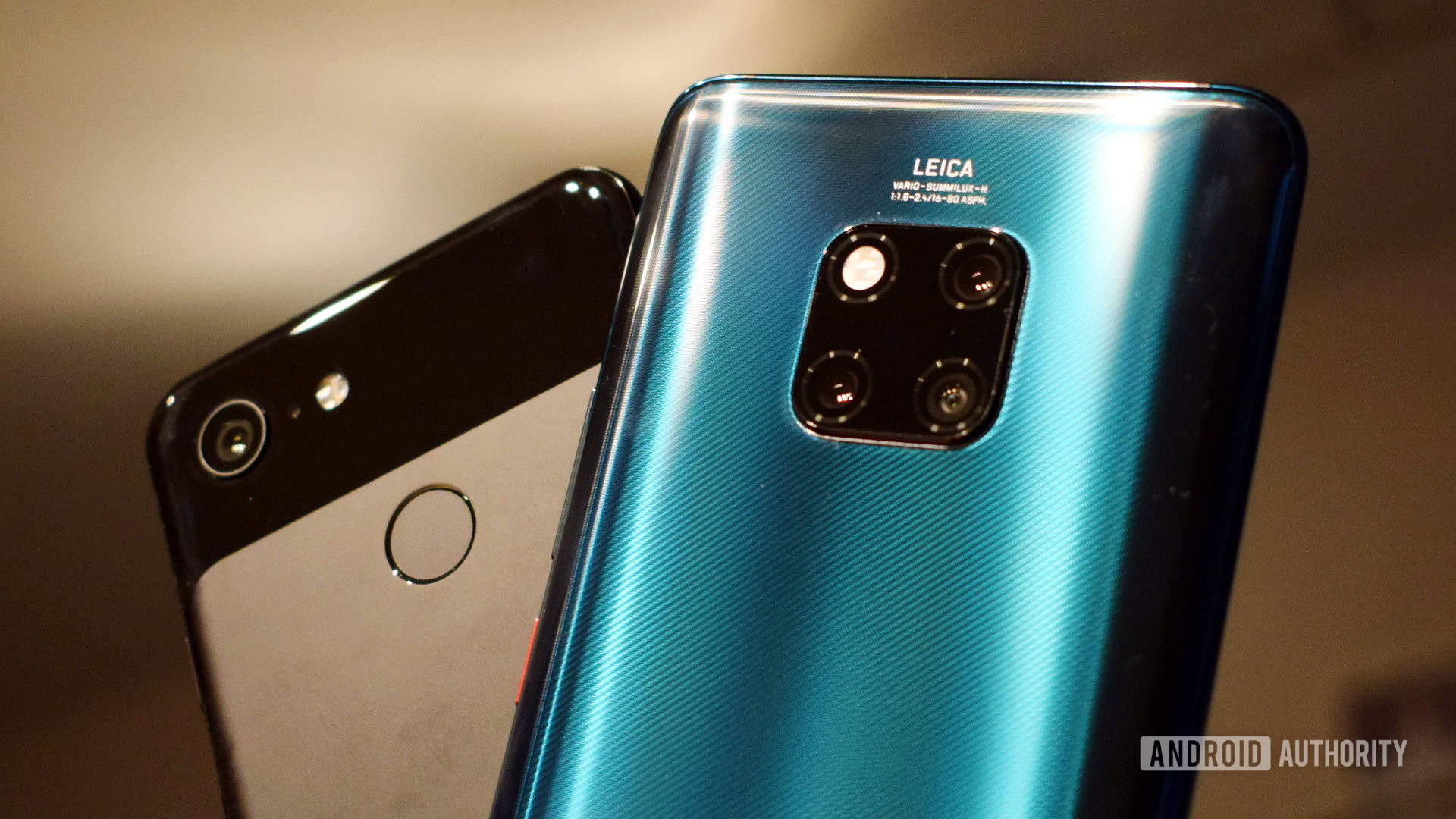Affiliate links on Android Authority may earn us a commission. Learn more.
HUAWEI Mate 20 Pro vs LG V40: which wide-angle camera is best?

If you’re after a mobile photography powerhouse, the new HUAWEI Mate 20 Pro and LG V40 ThinQ both offer compelling triple-camera setups designed to give serious photographers that added flexibility. Both offer wide-angle shooting options, something that’s become one of the most popular camera features packed into high-end smartphones.
LG has been experimenting with wide-angle lenses for a few generations now, so it has plenty of experience here. The Mate 20 series is HUAWEI’s first entry into the field. Let’s break down how they stack up.
| Wide Angle Camera Specs | HUAWEI Mate 20 Pro | LG V40 |
|---|---|---|
| Wide Angle Camera Specs Resolution | HUAWEI Mate 20 Pro 20 megapixels | LG V40 16 megapixels |
| Wide Angle Camera Specs Aperture | HUAWEI Mate 20 Pro f/2.2 | LG V40 f/1.9 |
| Wide Angle Camera Specs Pixel Size | HUAWEI Mate 20 Pro 1.0µm | LG V40 1.0µm |
| Wide Angle Camera Specs Sensor Size | HUAWEI Mate 20 Pro 1/2.7" | LG V40 1/3.1" |
| Wide Angle Camera Specs Auto Focus | HUAWEI Mate 20 Pro PDAF & Laser | LG V40 NA |
| Wide Angle Camera Specs Equivalent Focal Length | HUAWEI Mate 20 Pro 16mm | LG V40 16mm |
On paper, there’s very little in it. Both offer an equivalent focal length, have 1.0um pixel sizes, and there’s not much detail difference between 16 and 20 megapixel images either. The LG V40 has a slightly wider aperture, hinting at a lead in low light performance. However, the Mate 20 Pro includes autofocus technology, which should make it more flexible for both near and distant shots. Let’s dive into some samples.
Also read: Google Pixel 3 camera shootout
Fitting more into the frame
The whole point of a wide-angle lens is to fit more into the picture than your regular camera. So how much more can you squeeze in versus both of these phones’ main sensors?
Both the V40 and Mate 20 Pro’s main cameras offer an equivalent focal length of 27mm, widening to 16mm when switching over to the wide-angle lens. As such, both cameras widen out their field of view by a virtually identical amount and should offer virtually identical frames.
The LG V40 offers a field of view of about 107 degrees. Although the Mate 20 Pro shares the same 16mm equivalent focal, it has a slightly larger sensor and therefore a slightly wider field of view. We can see this slight extra width in our example shots above and the ones below. It’s not a huge difference — maybe a few degrees — but the Mate 20 Pro does fit a tiny bit more in the frame.
Wide-angle lenses offer a “step back” from the regular sensors. Both cameras perform their duty well enough in that regard. Colors are bright and vivid, though more so with the V40, and exposure is pretty good in most scenarios too. It’s only when we begin pixel peeping that major differences appear.
Lens quality is hugely important
While both cameras look pretty good on paper, we still need to find out the quality of both lenses. This is particularly important with wide-angle lenses, as light capture without distortion and image curvature around the edges are more important here. The less-than-ideal lighting conditions of the rainy day are a pretty good way to see how the cameras perform in the real world. Here are a couple of full frame examples.
At full frame, there isn’t too much to tell between them. There are some exposure and color balance differences, but nothing you probably couldn’t even out in post. However, cropping into the details reveals some major differences in image quality. Let’s start with the center focal point of the picture.

While the Mate 20 Pro may be a tad aggressive on the sharpening, it captures a lot more detail on both the brickwork and trees than the V40. This isn’t a megapixel issue, as these are 100 percent crops and the difference between the 20 and 16 megapixel images should be negligible. The V40’s lens setup just doesn’t allow for enough light and detail capture, which results in much lower resolution looking images than its sensor suggests. We can also see aggressive use of denoise across the V40’s image, which rubs out a lot of the detail too.
Overall, the V40 appears smudged by comparison and is almost out of focus on the background trees. This focusing issue has been a consistent problem in my experience with the camera, owing to the lack of autofocus. The focus and detail situation is even worse at the camera’s edges.
Here, the V40’s lack of focus is far more obvious. There’s no detail capture on the nearby wall or ivy, and it’s a similar situation when examining the distant bushes too. Few users will crop in on these wide-angle shots (you’d be better off using the main sensor), but serious photographers probably won’t be impressed when they come to print out these pictures.
While the lack of focus isn’t such an issue on a small smartphone screen or social media post, the loss of detail and poor focusing is much more apparent on larger displays and high-quality printouts.
Both lenses also suffer from some chromatic aberration (purple tint on high-contrast areas) towards the edges of their lenses. This is not unexpected for smartphone lenses, but the LG V40 still comes off worse in this regard too.
Few are ever likely to crop or blow up wide-angle shots, but when you do the results are night and day.
Super macro and low light
While not the main reason many will want a wide-angle camera, the Mate 20 Pro has an extra ability to focus in as close as 2.5cm in super-macro mode. So if you want to take some super close up pictures and capture fine details, the Pro’s wide-angle camera can actually be more useful than its main 40MP shooter.
The LG V40 doesn’t offer any autofocusing technology for its wide-angle camera, and the Mate 20 Pro offers both PDAF and laser options. The result is that the Mate 20 Pro can focus on super close up objects, while the V40 can’t.
This certainly isn’t a major use case for most people who will be shooting with a wide-angle lens. However, the Mate 20 Pro’s support for super macro shooting certainly makes it the more flexible shooter for the more serious photographer.
Low light is more likely to be a common use case for these cameras.

While the HUAWEI Mate 20 Pro might be a winner in terms of daylight clarity, the LG V40 is by far the better wide-angle camera in low light. HUAWEI doesn’t apply any of its usual low light trickery to the wide-angle camera, and as a result, the pictures come out very dark, lacking in color, and blurred from the combination of long exposure time and denoise algorithm.
The LG V40 take a little longer snap its pictures, hinting at some HDR magic to help boost the exposure. Although the result is still rather noisy, the V40 managed to capture much more color in low light. Even with HDR on, I couldn’t get the Mate 20 Pro anywhere near as good as the LG V40 in every low light situation I tried.
The HUAWEI Mate 20 Pro is the better performer, but only just
The LG V40’s wide-angle camera is great for typical smartphone snaps. You’re unlikely to notice the focus or detail issues when viewing pictures on a smartphone screen or compressing them down for social media. The camera does its job, providing extra width for pictures just when you need it. It’s not the main camera after all.
The LG V40's lack of autofocus lets the camera down when we go pixel peeping
Compared to the HUAWEI Mate 20 Pro, the LG V40’s wide-angle camera clearly isn’t as consistent or as flexible in most instances. The Mate 20 Pro isn’t perfect — the company’s heavy use of sharpening won’t be to everyone’s tastes — but it captures more detail and has better focusing capabilities. However, it is noticeably worse in low-light situations. If you’re regularly capturing wide-angle shots in the evenings you might want the V40.
Overall, the Mate 20 Pro is the better wide-angle camera in daylight, which is when most people will be capturing their wide-angle snaps. This might seem like a very harsh comparison, but we’re talking about $1000 smartphones boasting some of the best cameras in the business. The LG V40 cuts corners with its lack of wide-angle autofocus that might end up being a bugbear for those looking to get the most out of their camera.
Next: Best of Android 2018: The best Android smartphone cameras